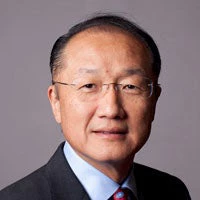Read this post in Español, Français, عربي

As the US government’s new blueprint for an AIDS-free generation demonstrates, today we have the science, the knowledge, the experience, and the tools to fight the epidemic. I was particularly happy to see that the blueprint included multi-year, sustainability strategies and that it stressed the need to support country leadership. With that leadership, and with a long-term plan owned by countries, these efforts can succeed.
Second, on my first World AIDS Day as World Bank president, I’m also reflecting on how we can apply the lessons of the AIDS movement to the broader fight against global poverty. The AIDS movement has shown us the critical importance of investing in evidence-based programs and building systems for effective service delivery.
The AIDS movement illustrated the power of information and transparency to educate, reduce stigma, and empower citizens to take action. This approach has yielded remarkable results in countries like India, where the World Bank has worked with the National AIDS Control Program to achieve 80 percent coverage of HIV services in high-risk populations, stronger health systems, and avert an estimated 3 million new infections. Two new studies demonstrate that programs targeting high-risk groups are cost-effective and can significantly curb the spread of HIV.
The AIDS movement also has shown us the value of a strong partnership between governments and civil society groups who can advocate, innovate, and reach the most marginalized and vulnerable people in society. And it has shown us that sustained progress requires a multi-sectoral, multi-pronged approach that focuses not only on care for those affected, but also on prevention.
All of these lessons appear repeatedly in the thousands of messages and ideas we have received from people around the world in response to our #whatwillittake to end poverty campaign.
On this World AIDS Day, the goal of ending AIDS is within our reach. Just think back to the beginning of AIDS, when we first heard reports of a mysterious illness that was killing people. I was a senior in college, and I remember well the fear because of the great unknowns. Now, 30 years later, after so many lives have been lost, we know so much, and we also know that we must do all we can to end AIDS.
Related Links:

Join the Conversation